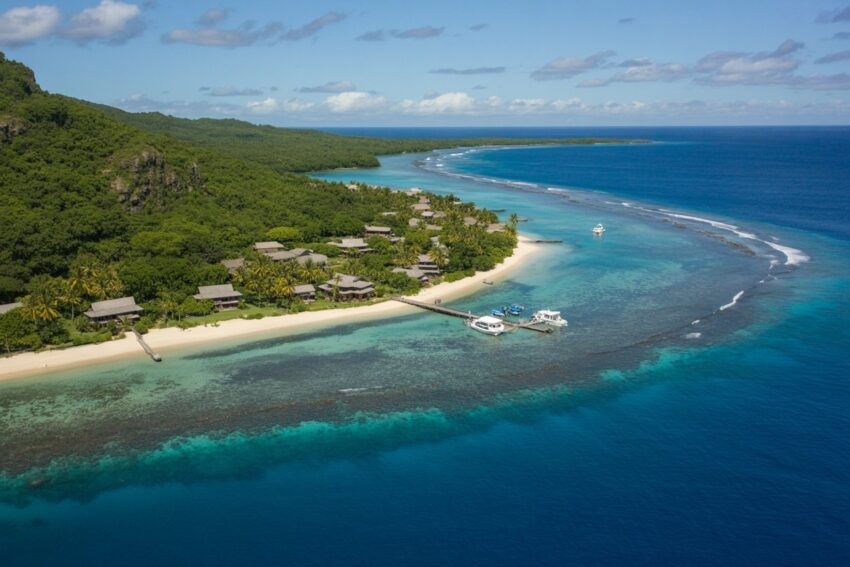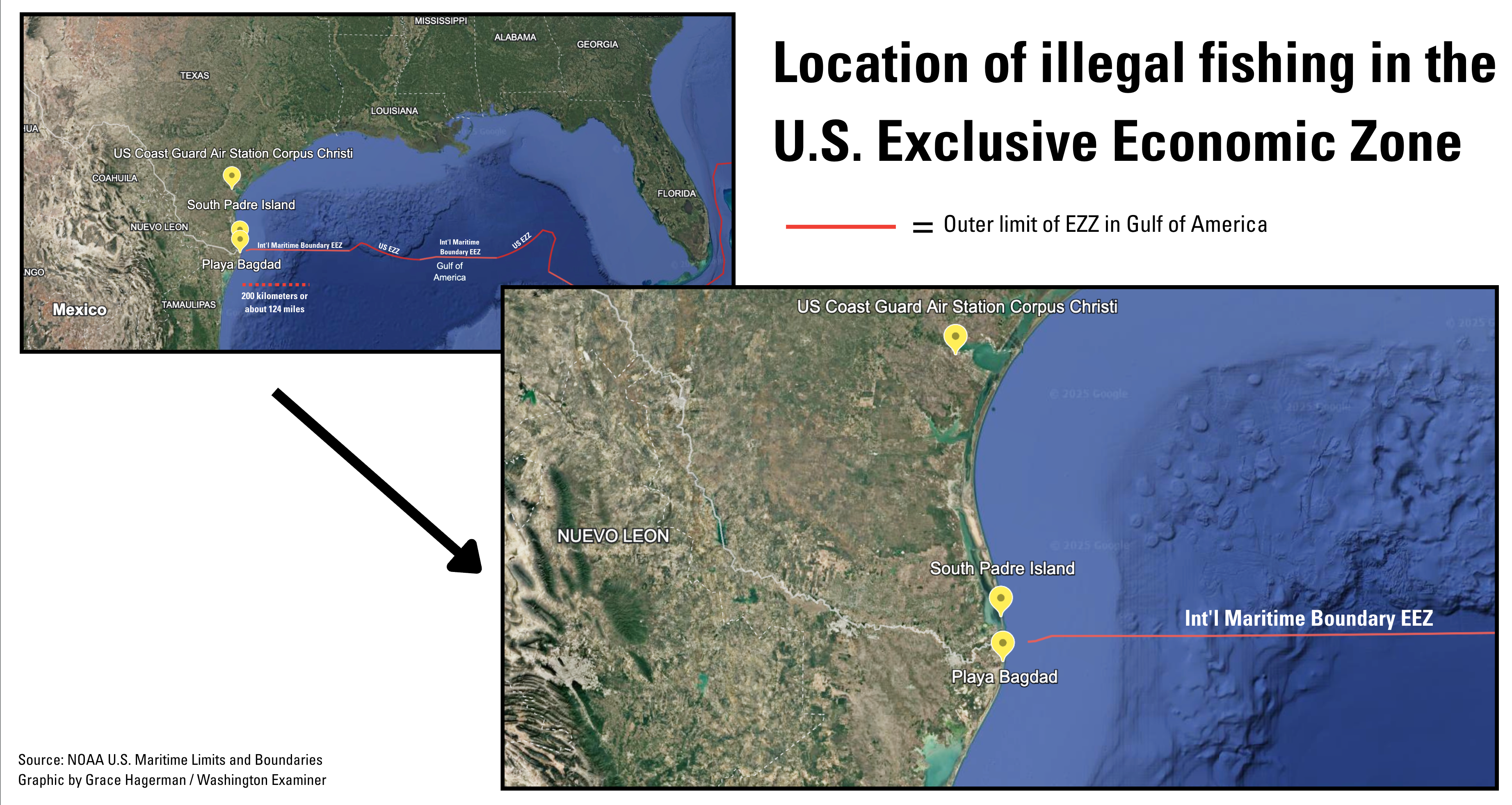Report on the Functional Extinction of Acropora Corals in Florida and Implications for Sustainable Development Goals
Executive Summary
A recent study confirms the functional extinction of elkhorn and staghorn (Acropora) corals throughout Florida’s reef system following an unprecedented marine heatwave in 2023. This ecological catastrophe represents a significant setback for the achievement of key United Nations Sustainable Development Goals (SDGs), particularly SDG 14 (Life Below Water) and SDG 13 (Climate Action). The loss of these dominant reef-building species, which have structured the ecosystem for millennia, undermines marine biodiversity, coastal protection, and local economies.
Background and Causative Factors
Acropora corals were already designated as critically endangered due to a combination of persistent environmental stressors. The 2023 marine heatwave, however, acted as a final, devastating blow. This event is a direct manifestation of the global failure to adequately address SDG 13 (Climate Action).
- Historical Stressors: The corals faced long-term threats from disease, pollution, and hurricane damage, weakening their resilience.
- 2023 Marine Heatwave: In the summer of 2023, ocean temperatures in Florida surpassed 90 degrees Fahrenheit, the highest recorded in 150 years. This prolonged heat stress, lasting approximately three months, induced mass coral bleaching.
- Coral Bleaching Mechanism: Extreme heat causes corals to expel the symbiotic algae that provide energy and color, leading to starvation and death if temperatures do not return to normal.
Research Findings and Ecological Impact
A comprehensive study led by the National Oceanic and Atmospheric Administration (NOAA) and Chicago’s Shedd Aquarium monitored over 52,300 Acropora corals across the nearly 350-mile Florida reef system. The findings document a near-total loss, directly impacting the targets of SDG 14 (Life Below Water).
- Mortality Rate: By March 2024, between 98% and 100% of Acropora colonies in the southern portion of the reef system had perished.
- Functional Extinction: The report concludes that while some individual corals survive, their populations are no longer dense enough to perform their essential ecological role of building and maintaining the reef structure.
- Cascading Impacts: The loss of the reef framework triggers severe consequences, including slowed reef growth, diminished habitat complexity, and the loss of shelter for countless fish and invertebrate species.
Implications for Sustainable Development Goals (SDGs)
The collapse of Florida’s Acropora coral populations has profound and negative implications across multiple SDGs, highlighting the interconnectedness of environmental health and human well-being.
- SDG 14 (Life Below Water): This event signifies a catastrophic failure to conserve and sustainably use marine resources. It directly contravenes the goal of protecting marine and coastal ecosystems from significant adverse impacts.
- SDG 13 (Climate Action): The coral die-off is a clear and alarming consequence of unchecked climate change and rising ocean temperatures, underscoring the urgent need for immediate and drastic action to reduce global emissions.
- SDG 11 (Sustainable Cities and Communities): Healthy coral reefs act as natural barriers that protect coastlines from storms and erosion. Their loss increases the vulnerability of coastal communities, threatening infrastructure and human safety.
- SDG 8 (Decent Work and Economic Growth): The degradation of the reef ecosystem threatens local economies that depend on marine tourism, recreation, and fishing, jeopardizing livelihoods and sustainable economic growth.
Projections and A Call to Action
The report projects that natural recovery is highly unlikely, with climate models predicting annual severe bleaching events in the region by 2040. This situation demands a coordinated response aligned with the principles of the SDGs.
- Urgent Climate Mitigation: The primary recommendation is to take aggressive global action to reduce planet-heating pollution, which is fundamental to achieving SDG 13 and creating conditions where coral reefs can survive.
- Enhanced Human Intervention: Restoration efforts, such as rearing corals in onshore and offshore nurseries, must be scaled up. This requires robust partnerships between government agencies, research institutions, and non-profits, in line with SDG 17 (Partnerships for the Goals).
- Reversing the Trend: While the term “functional extinction” is dire, it does not mean complete biological extinction. The report serves not as a message of hopelessness, but as an urgent call to action. Targeted interventions, combined with improved ocean conditions, can potentially reverse this trend and restore the ecological function of these vital ecosystems.
Analysis of Sustainable Development Goals in the Article
1. Which SDGs are addressed or connected to the issues highlighted in the article?
-
SDG 14: Life Below Water
This goal is central to the article, which focuses on the devastation of marine ecosystems, specifically the functional extinction of elkhorn and staghorn corals in Florida’s reef system. The article details the loss of marine biodiversity and the degradation of the coral reef habitat, which are core concerns of SDG 14.
-
SDG 13: Climate Action
The article explicitly identifies “record-breaking ocean temperatures,” an “unprecedented marine heat wave,” and “ocean warming” as the primary drivers of the coral bleaching and death. It directly links the issue to climate change and calls for “aggressive climate action” and cutting “planet-heating pollution,” making SDG 13 a fundamental aspect of the discussion.
-
SDG 11: Sustainable Cities and Communities
A direct consequence of the coral reef’s collapse, as mentioned in the article, is that it “leaves coastlines more exposed to storms and erosion.” This increased vulnerability of coastal areas to climate-related hazards directly impacts the safety and resilience of human communities living there, connecting the issue to the goals of SDG 11.
2. What specific targets under those SDGs can be identified based on the article’s content?
-
SDG 14: Life Below Water
- Target 14.1: By 2025, prevent and significantly reduce marine pollution of all kinds. The article mentions that the corals were already “critically endangered due to a host of factors including disease, pollution, hurricanes and ocean warming,” identifying pollution as a key stressor on the marine environment.
- Target 14.2: By 2020, sustainably manage and protect marine and coastal ecosystems to avoid significant adverse impacts. The article’s entire focus is on the failure to protect the Florida coral reef system, leading to its “functional extinction” and the loss of its ecological role in building and maintaining the reef structure.
-
SDG 13: Climate Action
- Target 13.1: Strengthen resilience and adaptive capacity to climate-related hazards and natural disasters in all countries. The article highlights a decrease in resilience, stating that the loss of corals “leaves coastlines more exposed to storms and erosion,” which are climate-related hazards.
- Target 13.2: Integrate climate change measures into national policies, strategies and planning. The article concludes with a “call to action” for “aggressive climate action” and the need to “cut planet-heating pollution,” implying that current climate change measures are insufficient to protect these ecosystems.
-
SDG 11: Sustainable Cities and Communities
- Target 11.5: By 2030, significantly reduce the number of deaths and the number of people affected and substantially decrease the direct economic losses relative to global gross domestic product caused by disasters, including water-related disasters, with a focus on protecting the poor and people in vulnerable situations. The degradation of the reef system increases the vulnerability of coastal communities to storms, directly threatening the safety and economic stability of these areas, which aligns with the goal of reducing the impact of natural disasters.
3. Are there any indicators mentioned or implied in the article that can be used to measure progress towards the identified targets?
Yes, the article provides several quantitative and qualitative indicators that can be used to measure the health of the marine ecosystem and the impacts of climate change.
-
Indicators for SDG 14 (Life Below Water)
- Coral Mortality Rate: The article provides a precise statistic: “an astonishing 98% to 100% of colonies on the southern end of the system had died.” This serves as a direct indicator of the health and viability of the coral reef ecosystem (relevant to Target 14.2).
- Species Conservation Status: The article uses the terms “critically endangered” and “functionally extinct” to describe the status of the elkhorn and staghorn corals. These classifications are key indicators of biodiversity loss.
- Ecosystem Functionality: The article notes that the remaining corals are “no longer in densities high enough to carry out their ecological role.” The density of key species is an implied indicator of an ecosystem’s ability to function.
-
Indicators for SDG 13 (Climate Action)
- Ocean Temperature Anomaly: A key indicator mentioned is the record-breaking water temperature: “Florida’s water temperatures peaked at more than 90 degrees Fahrenheit, the highest recorded in the region for at least 150 years.” This directly measures a key impact of climate change.
- Duration of Extreme Climate Events: The article specifies that “The 2023 heatwave in Florida lasted roughly three months.” The frequency and duration of such marine heatwaves are critical indicators for tracking climate change impacts (relevant to Target 13.1).
4. Summary Table of SDGs, Targets, and Indicators
| SDGs | Targets | Indicators Identified in the Article |
|---|---|---|
| SDG 14: Life Below Water |
14.1: Reduce marine pollution.
14.2: Protect and restore ecosystems. |
– Mention of “pollution” as a contributing factor to coral endangerment. – Coral mortality rate: “98% to 100% of colonies… had died.” – Species status: “functionally extinct” and “critically endangered.” – Ecosystem functionality: Corals are in densities too low to “carry out their ecological role.” |
| SDG 13: Climate Action |
13.1: Strengthen resilience to climate-related disasters.
13.2: Integrate climate change measures into policies. |
– Increased coastal vulnerability: “leaves coastlines more exposed to storms and erosion.” – Ocean temperature records: “peaked at more than 90 degrees Fahrenheit, the highest recorded… for at least 150 years.” – Duration of heatwave: “lasted roughly three months.” – Call for “aggressive climate action” and to “cut planet-heating pollution.” |
| SDG 11: Sustainable Cities and Communities | 11.5: Reduce the adverse effects of natural disasters. | – Loss of natural coastal protection from storms and erosion due to reef degradation, increasing risks for coastal communities. |
Source: cnn.com







